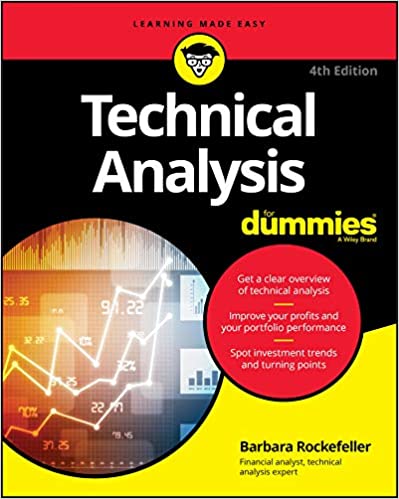Grasp and apply the basic principles of technical analysis
Savvy traders know that the best way to maximize return is to interpret real-world market information for themselves rather than relying solely on the predictions of professional analysts. This straightforward guide shows you how to put this into profitable action—from basic principles and useful formulas to current theories on market trends and behavioral economics—to make the most lucrative decisions for your portfolio.
The latest edition of Technical Analysis for Dummies includes a brand-new chapter on making the right decisions in a bull or bear market, an updated look at unique formulas and key indicators, as well as refreshed and practical examples that reflect today today's financial atmosphere.
- Become an expert in spotting market trends and key indicators
- Get the skinny on the latest research on behavioral economics
- Take a deep dive into how to read market sentiment and make it work for you
- Get a look at the first innovation in charting for decades—straight from Japan
With comprehensive coverage from charting basics to the cutting edge, Technical Analysis for Dummies includes everything you need to the make informed independent market decisions that will maximize your profits. Happy trading!
چکیده فارسی
اصول اولیه تحلیل تکنیکال را درک کرده و به کار ببرید
معاملهگران باهوش میدانند که بهترین راه برای به حداکثر رساندن بازده، تفسیر اطلاعات بازار واقعی برای خود به جای تکیه بر پیشبینیهای تحلیلگران حرفهای است. این راهنمای ساده به شما نشان میدهد که چگونه میتوانید این کار را به صورت سودآور انجام دهید - از اصول اولیه و فرمولهای مفید گرفته تا تئوریهای فعلی در مورد روند بازار و اقتصاد رفتاری - تا سودآورترین تصمیمها را برای مجموعه خود بگیرید.
آخرین نسخه تجزیه و تحلیل فنی برای Dummies شامل یک فصل کاملاً جدید در مورد تصمیم گیری صحیح در بازار گاو نر یا خرس، نگاهی به روز به فرمول های منحصر به فرد و شاخص های کلیدی، و همچنین به روز شده است. و نمونه های عملی که منعکس کننده فضای مالی امروز هستند.
- در تشخیص روندهای بازار و شاخص های کلیدی متخصص شوید
- آخرین تحقیقات در مورد اقتصاد رفتاری را دریافت کنید
- درباره نحوه خواندن احساسات بازار و انجام آن برای شما مفید باشید
- نگاهی به اولین نوآوری در نمودارگیری برای چندین دهه - مستقیماً از ژاپن بیاندازید
با پوشش جامع از نمودارهای اولیه گرفته تا لبه برتر، تجزیه و تحلیل فنی برای Dummies شامل همه چیزهایی است که برای تصمیم گیری آگاهانه در بازار مستقل نیاز دارید که سود شما را به حداکثر می رساند. تجارت مبارک!
ادامه ...
بستن ...
ISBN-13: 978-1119596554
ISBN-10: 1119596556
ادامه ...
بستن ...










